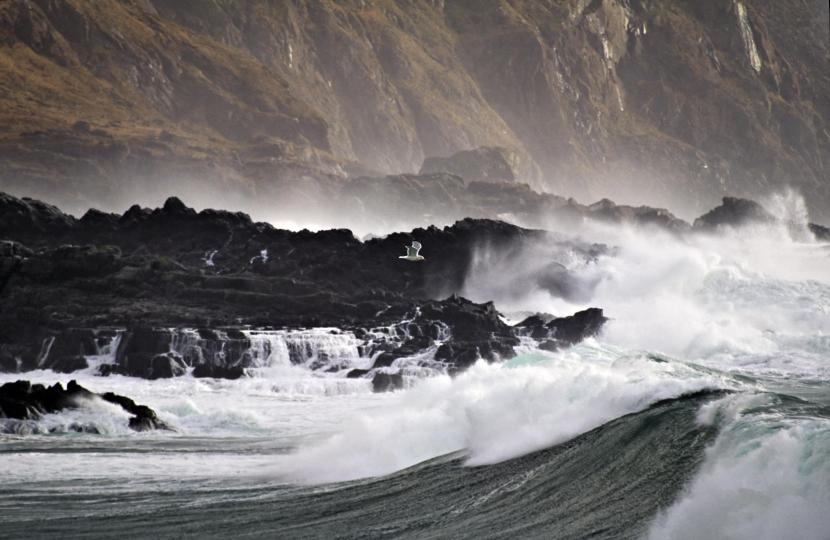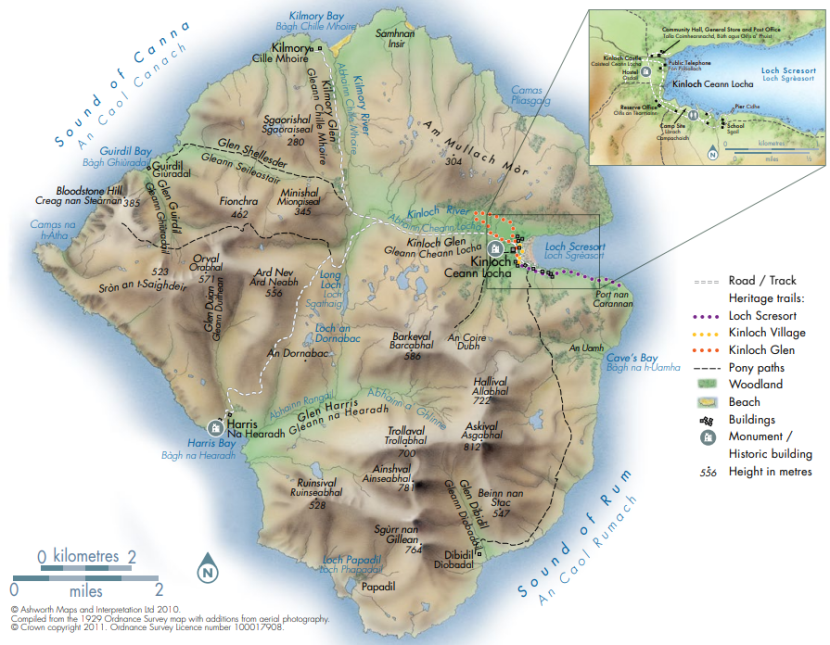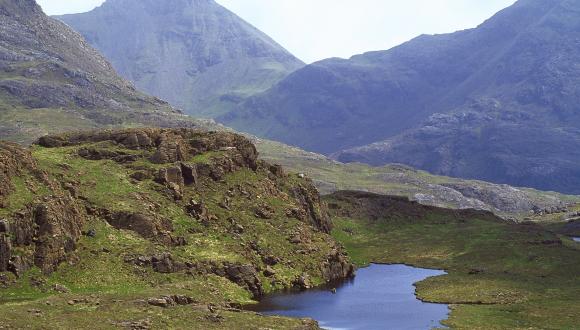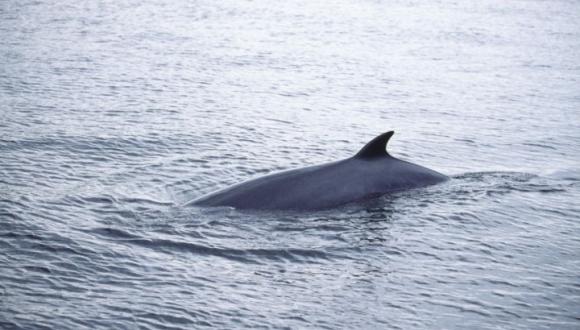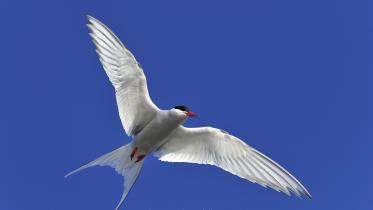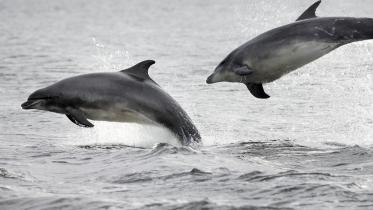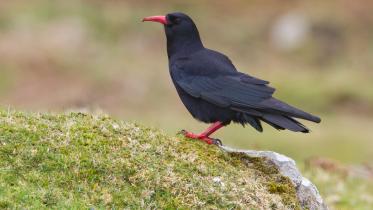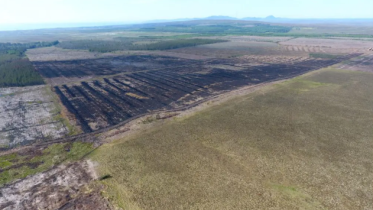Rum NNR - visiting the reserve leaflet
Welcome to Rum National Nature Reserve
Diamond-shaped Rum is the largest of the Small Isles. From bogs peppered with lochans to cliffs, noisy with seabird colonies, Rum’s contrasting landscapes give the island its special character as one of Britain’s top National Nature Reserves.
Jewel of the Hebrides

Planning your visit
- Caledonian MacBrayne runs a year-round ferry from Mallaig (Tel: 01687 462403)
- Summer boat trips leave from Arisaig (Tel: 01687 450224).
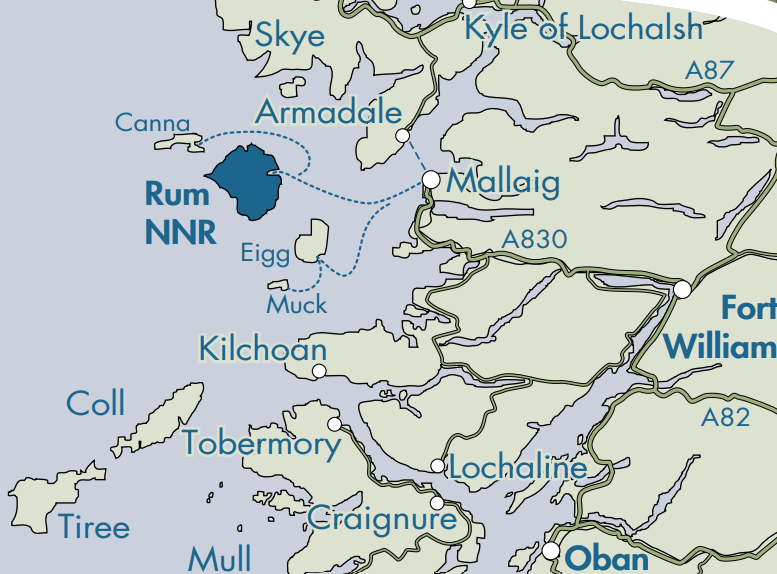
- Pre-book accommodation, meals or a guided tour of Kinloch Castle from Castle Hostel (Tel: 01687 462037).
- Summer amenities include shops, a tearoom, a campsite, a visitor centre and ranger-led events.
- Check out Rum on www.nnr-scotland.org.uk or www.isleofrum.com or contact
NatureScot
Rum Reserve Office
Isle of Rum
Inverness-shire
PA43 4RR
- Telephone: 0131 314 4181
-
Email: [email protected]
A wilderness playground
A day trip to Rum takes in the holiday home of an Edwardian millionaire, a guided wildlife walk, a ramble on a nature trail and otter and seal spotting from the shores of Loch Scresort. A longer stay means exploring Rum’s wild places on pony paths along Loch Scresort, to the deserted village of Kilmory and into the heart of an extinct volcano. Experienced climbers head for the Cuillin peaks, one of Scotland’s finest mountain ridge walks.
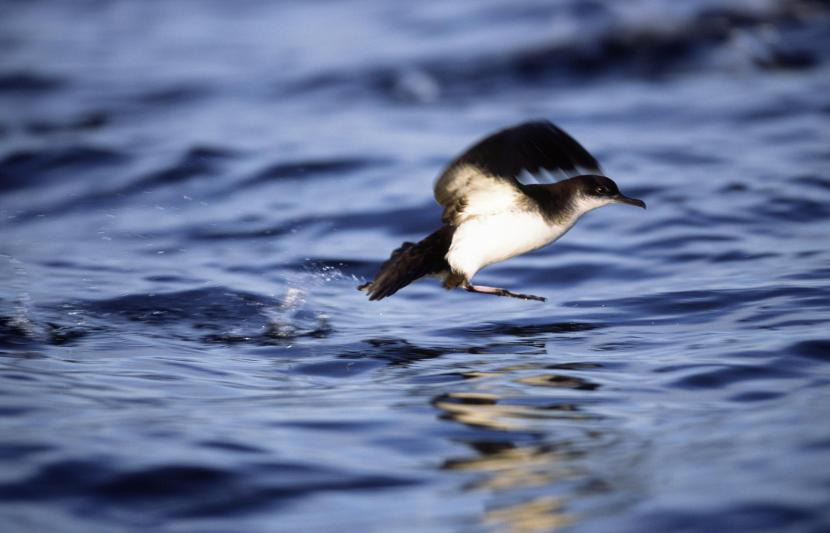
A Rum first
White-tailed sea eagles share Rum’s air space with golden eagles. Britain’s largest bird of prey was reintroduced here in 1975. At least two of the 40 pairs of sea eagles on Scotland’s west coast regularly breed on Rum.
‘Wild’ goats and Rum ponies
Feral goats roam Rum’s cliff tops. They are probably the descendents of domestic goats left behind when the crofters emigrated. Today twenty, unique, Rum Highland ponies bring culled deer off the hills while Highland cattle help to maintain flower-rich grassland.
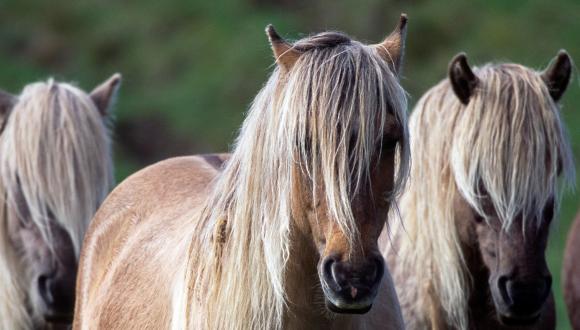
Monarchs under the microscope
Herds of red deer graze the mountain slopes. Rum’s population of around 1000 red deer has been investigated for over half a century in one of the world’s longest-running studies of a large mammal. Internationally recognised for its wildlife, geology and landscapes, Rum is an outdoor laboratory for enthusiasts and professionals alike.
Rum on the rocks
Rum is a history of our planet over three billion years. At the north end time and climate have exposed some of the world’s oldest rocks under layers of sandstone laid down when Scotland was a desert south of the Equator. The Cuillins are the shattered remains of a massive volcano which erupted 65 million years ago. Ice and water then removed about a kilometre of rock to expose the volcano’s core. Ice Age glaciers scooped out the island’s glens.
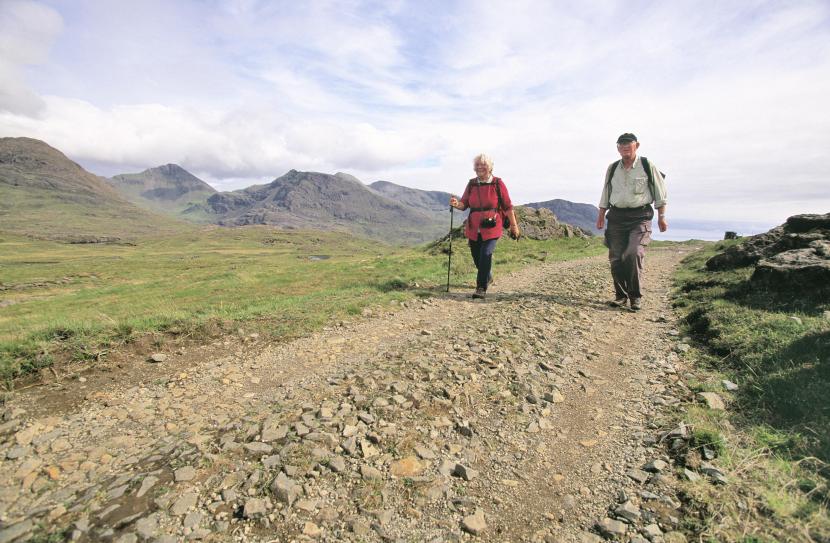
Commuters
Banking and shearing over the sea like tiny aircraft, over 70,000 pairs of Manx shearwater fly in at nightfall to nest in burrows on the high slopes. Although rarely seen, the Manx shearwater is Rum’s commonest bird, making up one of the world’s largest breeding colonies.
Playboy’s paradise
English millionaire George Bullough built Kinloch Castle as a sporting holiday home. Everything from the castle’s vivid red sandstone to an organ and gifts from the Emperor of Japan had to be brought in by sea. Visitors today can explore the rich Edwardian interiors and formal gardens that contrast with the wild setting.
Time for Rum
Past generations left their mark on Rum.
- 9000 - years ago the first settlers collect bloodstone for arrowheads.
- 4500 - years ago farmers make one of Northern Europe’s earliest brews.
- 800 - Christians bury their dead under Celtic crosses.
- 1000 - Viking sailors name Rum’s peaks as landmarks.
- 1500 - Gaelic speaking people work the pockets of fertile land.
- 1826 - Around 350 crofters are forced to emigrate to Nova Scotia.
- 1845 - The 2nd Marquis of Salisbury stocks his sporting estate with red deer.
- 1901 - Millionaire George Bullough builds Kinloch Castle as a holiday home.
- 1957 - Rum is declared Scotland’s second National Nature Reserve.
Reserve map
